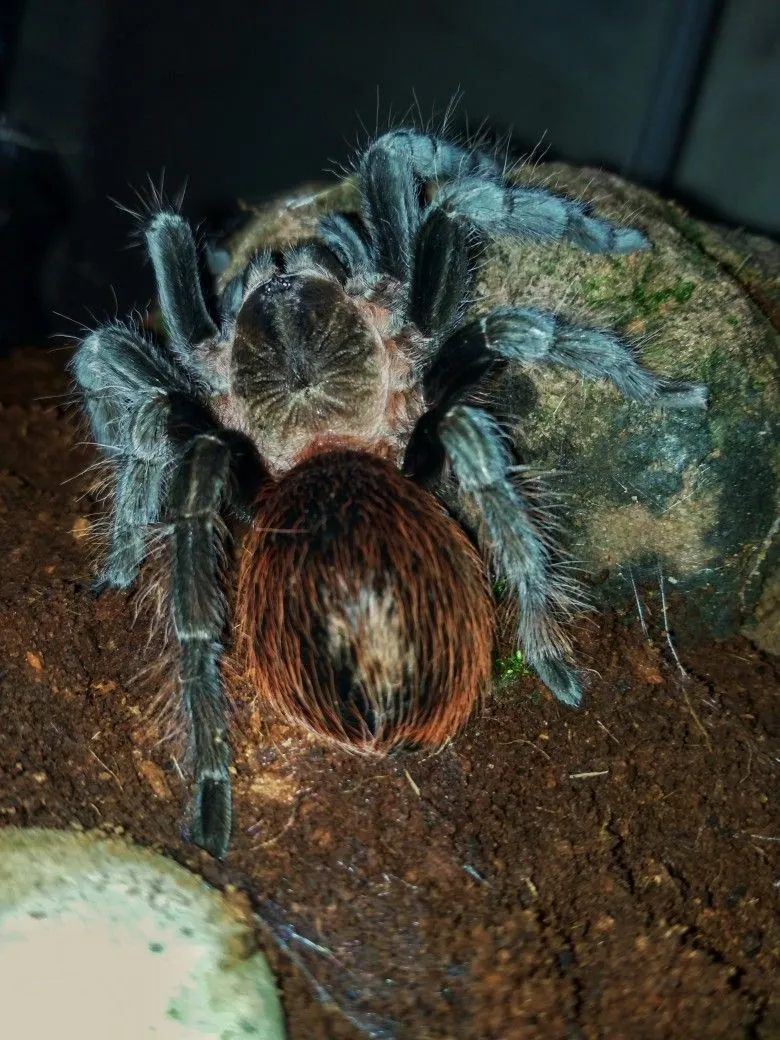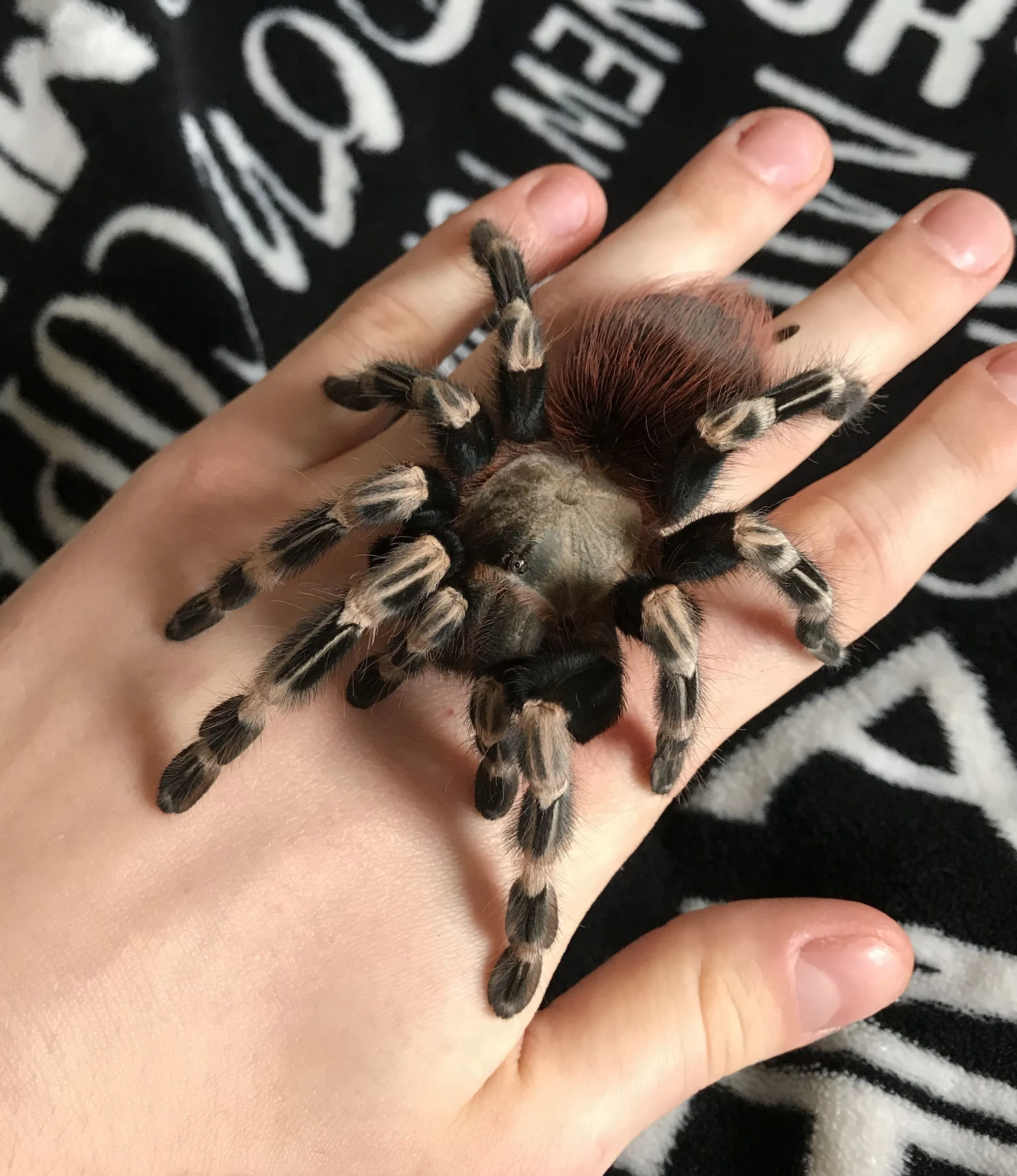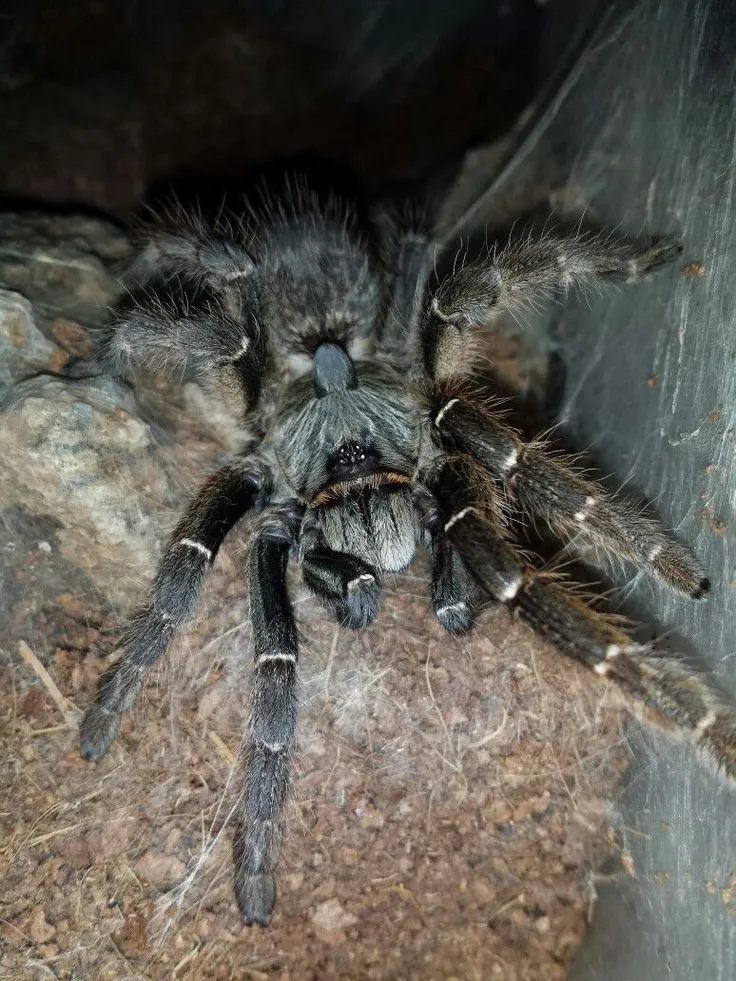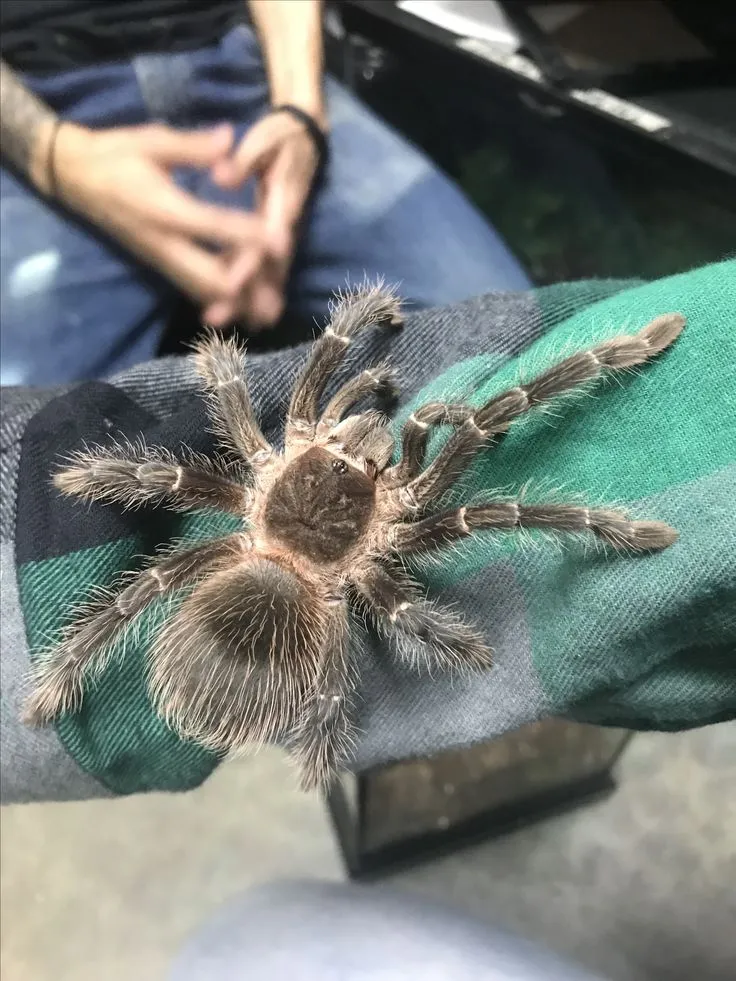The Allure of Tarantulas as Pets
Tarantulas, with their striking appearance and relatively low-maintenance needs, have become increasingly popular as pets. These fascinating arachnids offer a unique glimpse into the world of exotic animals, captivating enthusiasts with their diverse colors, sizes, and behaviors. Owning a tarantula can be a rewarding experience, providing a source of both fascination and education. However, potential owners should be well-informed about their care and the responsibilities that come with keeping these eight-legged creatures. This guide explores five amazing facts about tarantulas as pets, shedding light on their appeal and what makes them so captivating. Before you bring home a tarantula, understanding their unique characteristics is key. They are not like your average house pet; they require specialized care and a commitment to providing the right environment to thrive. Understanding their needs is the first step to becoming a successful tarantula owner.
Fact 1 Stunning Variety of Colors and Sizes
One of the most captivating aspects of tarantulas is their incredible diversity in color and size. From vibrant blues and oranges to subtle browns and blacks, tarantulas display a stunning spectrum of hues. This wide range of coloration adds to their appeal, making each species unique and visually striking. The variations in size are also remarkable, with some species remaining relatively small, while others can grow to impressive proportions. This diversity ensures that there is a tarantula to suit every preference and interest.
A Spectrum of Hues

The coloration of tarantulas is not just for show; it often serves a purpose. Some colors may help with camouflage in their natural habitats, blending in with the surrounding environment to avoid predators and ambush prey. Other colors might be a form of communication, used to signal to potential mates or to warn off rivals. Whatever the reason, the array of colors is a testament to the evolutionary adaptations of these fascinating creatures. From the brilliant blues of the Cobalt Blue Tarantula to the fiery oranges of the Mexican Fireleg, each species offers a unique visual experience, making them highly sought after by collectors and enthusiasts.
Size Variations
Tarantulas exhibit considerable variation in size, ranging from relatively small species, such as some of the dwarf tarantulas, to giants like the Goliath Birdeater, which can have a leg span of over 10 inches. This size difference affects their care requirements, with larger species needing larger enclosures and more substantial feeding. The size of a tarantula can also influence its temperament; some larger species are known to be more docile, while others are more prone to defensive behaviors. When selecting a tarantula as a pet, consider the space you have available and your comfort level with larger arachnids. Researching the adult size of a species is essential to ensure you can provide a suitable habitat as the tarantula grows.
Fact 2 Remarkably Low-Maintenance Pets
Compared to many other pets, tarantulas are surprisingly low-maintenance. They do not require daily walks, extensive grooming, or constant interaction. Their care primarily involves providing a suitable habitat, regular feeding, and ensuring proper environmental conditions. This makes them an excellent choice for people with busy schedules or those who are new to pet ownership. However, while they are low-maintenance, it is important to remember that they still have specific needs that must be met to ensure their health and well-being. Neglecting their basic requirements can lead to health problems or even premature death.
Feeding Frequency

Tarantulas typically eat once or twice a week, depending on their size, age, and metabolism. The main food source is typically insects, such as crickets, mealworms, and roaches. Younger tarantulas, which are still growing, need to be fed more frequently. Overfeeding can be as detrimental as underfeeding, so it’s important to observe your tarantula and adjust the feeding schedule accordingly. A healthy tarantula will have a plump abdomen, and it will generally refuse food when it is full. Provide fresh water at all times in a shallow dish, and remove any uneaten food to prevent mold or mites from forming in the enclosure.
Habitat Cleaning
Tarantula habitats need only minimal cleaning, usually involving the removal of uneaten food and the occasional spot cleaning of any waste. The substrate, which is the bedding in the enclosure, should be replaced periodically to maintain a healthy environment. The frequency of cleaning depends on the type of substrate used and the size of the enclosure. For most species, cleaning the enclosure every few months is sufficient, but it is essential to monitor the environment and make adjustments as needed. Avoid using harsh chemicals or cleaners, as these can be harmful to the tarantula. Instead, use warm water and mild soap if needed, and always rinse thoroughly.
Fact 3 Fascinating Behavior and Observation
Observing the behavior of a tarantula is one of the most rewarding aspects of owning one. Their unique behaviors, from web-spinning to molting, offer a fascinating glimpse into the life of an arachnid. Each species has its own distinct personality and habits, making them captivating subjects for observation. Many tarantula owners find immense satisfaction in watching their pets hunt, burrow, and interact with their environment. The opportunity to observe such behaviors provides a constant source of interest and educational value. Be patient and observant to truly appreciate the intricacies of their lives. Provide enrichment items, such as cork bark and artificial plants, to encourage natural behaviors and create a more stimulating environment.
Molting Process

Molting is a crucial process for tarantulas, allowing them to grow and replace old exoskeletons. During molting, the tarantula sheds its outer layer, revealing a new, larger one underneath. This process can take several hours, and the tarantula is vulnerable during this time. Providing a safe and undisturbed environment is essential. After molting, the tarantula will be soft and fragile; it will take several days for the new exoskeleton to harden. Do not feed your tarantula until its fangs have fully hardened. Observing the molting process can be a fascinating experience, but it is important to avoid handling or disturbing the tarantula during this time.
Web-Spinning and Burrowing
Tarantulas exhibit a variety of behaviors, including web-spinning and burrowing, depending on the species. Some tarantulas create elaborate webs to catch prey or to create a safe haven, while others are burrowing species that dig tunnels in the substrate. Observing these behaviors in your tarantula provides valuable insight into their natural instincts and preferences. The type of enclosure and substrate you provide will influence these behaviors. A suitable substrate for burrowing species should be deep and moist enough to allow them to dig tunnels. Web-spinning species may require more vertical space to create webs. Providing appropriate enrichment items can enhance the experience.
Fact 4 Relatively Long Lifespans
One of the most appealing aspects of owning a tarantula is their relatively long lifespans, especially when compared to other pets. This means you can enjoy the company of your tarantula for many years, forming a bond with your unique pet. However, it’s important to note that lifespan varies considerably between species and genders, so research the typical lifespan of the species you are interested in. A long lifespan requires commitment. Ensure your tarantula receives proper care, including appropriate housing, feeding, and environmental conditions.
Female Lifespan

Female tarantulas generally live significantly longer than males. Some female species can live for over 20 years, and in some cases, even longer, providing many years of companionship for the owner. The longevity of female tarantulas makes them a popular choice for pet owners looking for a long-term pet. This extended lifespan allows for a deeper connection and greater opportunity to appreciate their unique behaviors and personalities. Proper care, including a well-maintained habitat, appropriate diet, and avoidance of stressors, is crucial for maximizing a female tarantula’s lifespan.
Male Lifespan
Male tarantulas have a much shorter lifespan compared to females. They typically live for only a few years after reaching maturity. This difference is mainly due to the reproductive process. Males mature, and their primary goal is to find a mate. Once they have reached maturity and mated, their lifespan is considerably shortened. While the shorter lifespan of males can be disappointing, it is a natural part of their life cycle. The distinct behaviors and appearance of male tarantulas, especially during maturity, also make them interesting and engaging pets, even if their time with you is limited.
Fact 5 Unique and Engaging Pets
Tarantulas offer a unique pet ownership experience that is both rewarding and educational. They provide a fascinating glimpse into the world of arachnids, allowing owners to observe their unique behaviors and learn about their biology. Unlike more traditional pets, tarantulas have minimal interaction requirements, making them ideal for individuals with busy lifestyles. They require specialized care. This offers a unique learning experience. They provide a quiet, low-maintenance companionship, perfect for those seeking a pet that is both interesting and easy to manage.
Educational Aspect

Owning a tarantula can be an educational experience, providing the opportunity to learn about arachnid biology, behavior, and conservation. Owners often research their species, learn about their natural habitats, and understand their specific care requirements. This knowledge can be shared with others, promoting awareness and appreciation for these often-misunderstood creatures. The process of researching and caring for a tarantula can be a fulfilling learning journey, fostering a deeper understanding of the natural world and the importance of responsible pet ownership. Tarantulas are a gateway to learning. This can include learning about the ecosystem and even broader scientific principles.
Conversation Starter
Tarantulas often serve as unique conversation starters, sparking curiosity and interest among friends, family, and colleagues. Their striking appearance and unusual pet status make them a great topic of discussion. Sharing information about your tarantula, such as its species, care requirements, and unique behaviors, can be a fun and engaging way to educate others. Tarantula owners can provide information about the pet’s unique needs, dispel common myths about spiders, and increase awareness. This can also help shift the perception of arachnids. Sharing your experience as a tarantula owner can change perceptions about spiders and promote a greater appreciation for these fascinating creatures.
Potential Challenges and Considerations
While tarantulas can make rewarding pets, there are also potential challenges and considerations to be aware of. This includes understanding the risks of handling, proper habitat maintenance, and ethical considerations. Addressing these challenges proactively can ensure a positive experience for both the tarantula and its owner.
Venom and Handling Precautions

Although tarantula venom is generally not life-threatening to humans, it can cause pain, swelling, and other unpleasant symptoms. Most tarantulas are not aggressive and prefer to flee rather than bite. However, it’s crucial to handle them with care. Avoid handling tarantulas unless absolutely necessary. If you must handle your tarantula, do so close to the ground or over a soft surface, in case it falls. Always wash your hands thoroughly after handling. Learn about your tarantula’s temperament and species-specific behaviors to anticipate its reactions. Be calm and gentle to minimize stress for both you and the tarantula. Understanding the risks and taking appropriate precautions is essential for safe and responsible pet ownership.
Habitat Maintenance
Maintaining the proper habitat for your tarantula is essential for its health and well-being. This involves providing an appropriately sized enclosure, a suitable substrate, and the correct environmental conditions, including temperature and humidity. Regular cleaning and maintenance of the enclosure are also necessary to prevent the buildup of waste and potential health issues. Researching the specific needs of your tarantula species is crucial to provide the appropriate environment. Invest in tools such as a hygrometer and thermometer. Monitor the environment to make sure the tarantula is comfortable. Ensure the enclosure is escape-proof and secure. Proper habitat maintenance is fundamental to your tarantula’s health.
Ethical Considerations
Before acquiring a tarantula, consider the ethical implications of pet ownership. This includes sourcing your tarantula from a reputable breeder to ensure it is healthy and well-cared for. Consider the potential impact on wild populations. Ensure the tarantula is kept in an appropriate habitat and that its needs are met throughout its lifespan. Be prepared to provide proper care and enrichment. Only acquire a pet if you are willing and able to provide it with a lifetime of responsible care. Understanding the needs of your pet. Avoid supporting unethical practices, such as the capture of wild tarantulas or the purchase of tarantulas from irresponsible breeders. Responsible pet ownership is vital.
